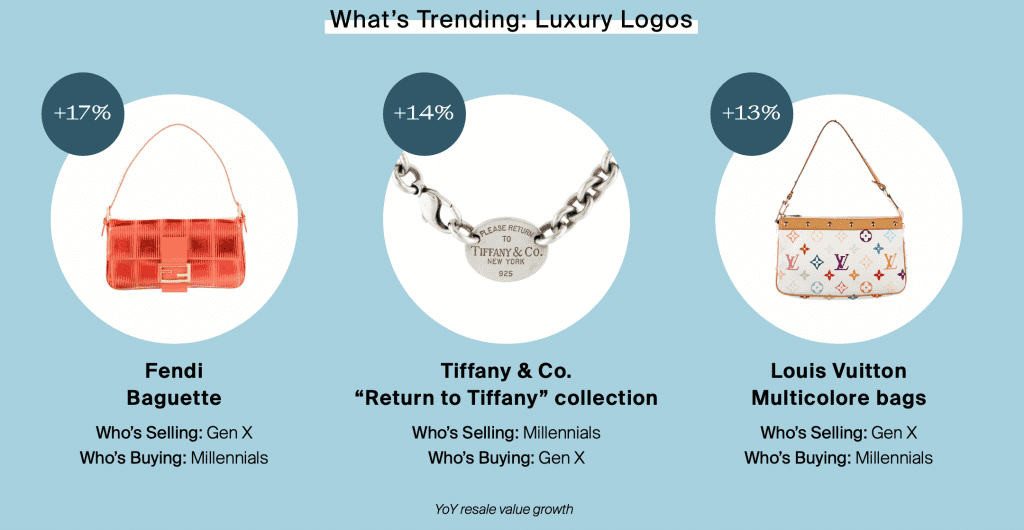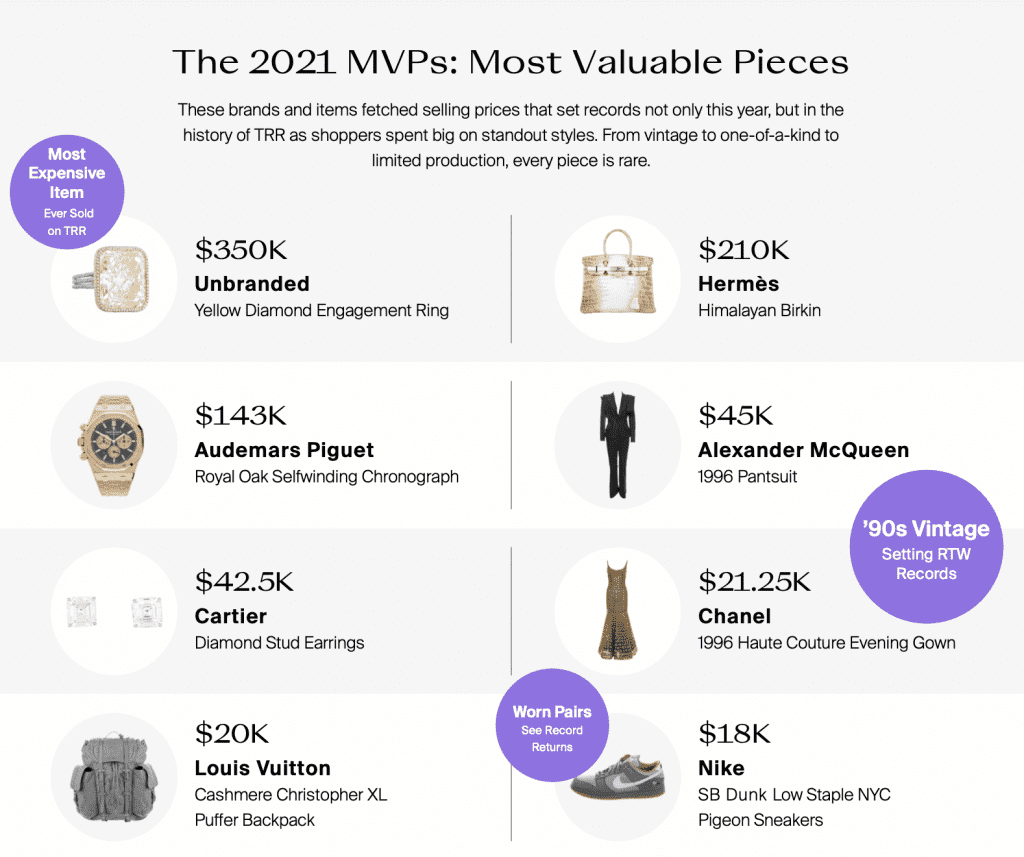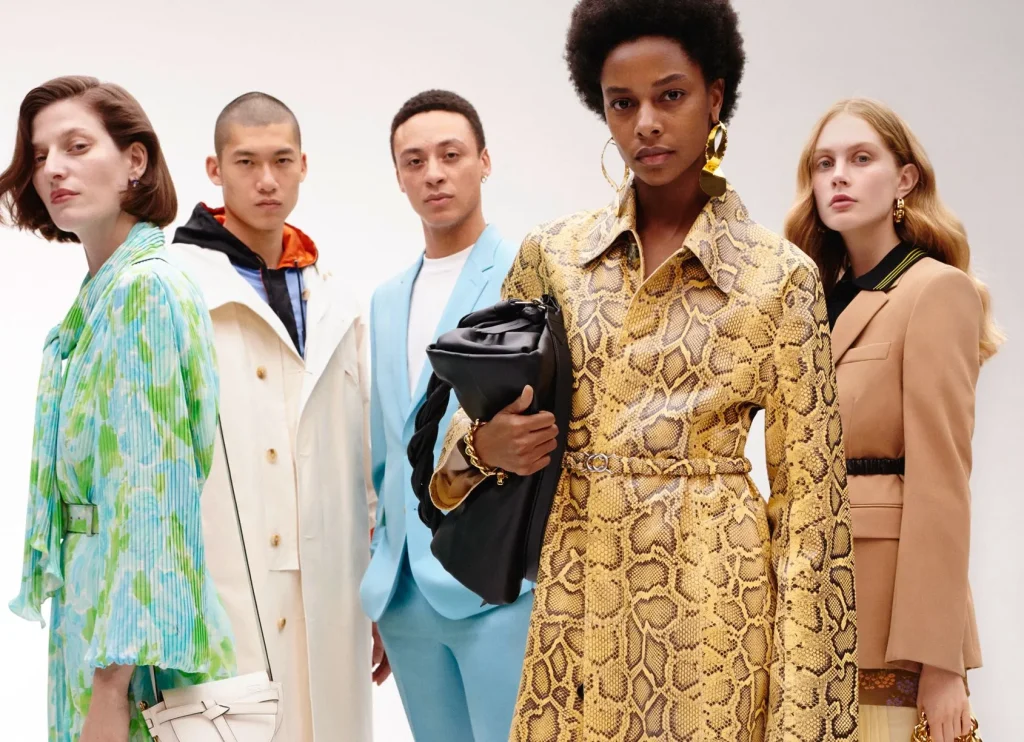“Resale has undeniably gone mainstream,” The RealReal president Rati Sahi Levesque asserts in the company’s annual consignment report, noting that luxury, in particular, “has one distinction that sets it apart: every demographic actively participates in luxury resale,” and over the past year, “every demo increased its adoption of secondhand luxury, and nearly every brand saw rising resale value as a result.” While sustainability-centric motivations are prompting consumers to increasingly shop resale, according to The RealReal’s report, the role of enduring supply chain issues were at the center of the company’s findings for the 2021 fiscal year, as no shortage of the rise in resale consumption over the course of the year was undoubtedly driven by supply chain constraints.
Diving into specific trends that it saw over the course of 2021, The RealReal (“TRR”) revealed that the highest gains in year-over-year resale growth came by way of high-value Nike sneakers, with “rapidly rising demand and limited availability for its most sought-after styles drove Nike to see resale value gain of [32 percent]” in 2021, the greatest of any brand on the resale platform. According to TRR’s Senior Director of Men’s Mayank Hajela, the boost for Nike can also be attributed to “the release of new Dunk styles and ongoing collaborations with brands like Off-White and Sacai, [which] made Nikes coveted across generations” of consumers; although, it is “primarily savvy millennials who are flipping pairs for profit.”
In terms of individual brands, Rolex saw the next greatest level of YoY resale growth with 16 percent, followed by Bottega Veneta (15 percent), Chrome Hearts (13 percent), and Hermès (13 percent).

As for what is sending actual resale values up, TRR states there are some overarching changes in consumer behavior that are boosting value for pre-owned products, including the desire to “extend the cycle of luxury items.” Some 40 percent of TRR shoppers are “replacing fast fashion with resale,” the company claims. But a potentially more significant driver of demand and resulting resale values – in 2021, at least – was the fact that consumers were “buying outside the primary market due to supply shortages,” as a result of the lack of availability of luxury goods at retail in many cases, and presumably, price increases tied to rising shipping costs, etc., which stood to make resale a more attractive option for a wider pool of consumers than maybe ever before.
(As a note, analysts expected resale to enjoy a sizable boost over the holidays in 2021 due to supply chain disruptions and larger lack-of-availability issues. A survey that Mercari released in October revealed that that 77 percent of Americans were expecting to buy at least one secondhand item this holiday season, which translates to an approximate $69.2 billion in secondary market sales between October and December 2021, an increase of almost 25 percent from the same period last year. TRR’s monthly reports for November and December 2021 seemed to reflect this, with the company revealing that its gross merchandise value amounted to $146 million in November (an increase of 51% and 46% compared to the same periods in 2020 and 2019) and $153 million in December (an increase of 40% and 49% compared to the same periods in 2020 and 2019).
Speaking specifically to the impact that “supply chain woes” had on increasing resale values in 2021, TRR revealed that it benefitted from the reality that in at least some cases “the resale market is increasingly becoming the only place you can get [an item], spurring a rise in resale value for coveted items that are perpetually sold out on the primary market.” Among these goods were, of course, Rolex watches, the limited supply of which helped to drive the value of the secondhand market exclusively for watched to $20 billion, CNBC reported in October. That market is expected to rise to more than $30 billion – or about half of the size of the new watch market – by 2025, per McKinsey.
On TRR, the Rolex Oyster Perpetual Watch boasted a year-over-year rise in resale value of 26 percent, topped only by the 27 percent rise for Hermès’ Avalon Blanket. Tourmaline jewelry rose in resale value by 15 percent in 2021 compared to the year prior; Louis Vuitton’s Multi Pochette Accessories were up 13 percent; and Chanel flap bags were up by 11 percent, the latter of which is likely impacted at least in part by the multiple price increases that the French luxury goods brand put in place for these bags at retail in 2021.
As for the most noteworthy individual items sold on TRR’s platform this year, you can find a list of those right here …












